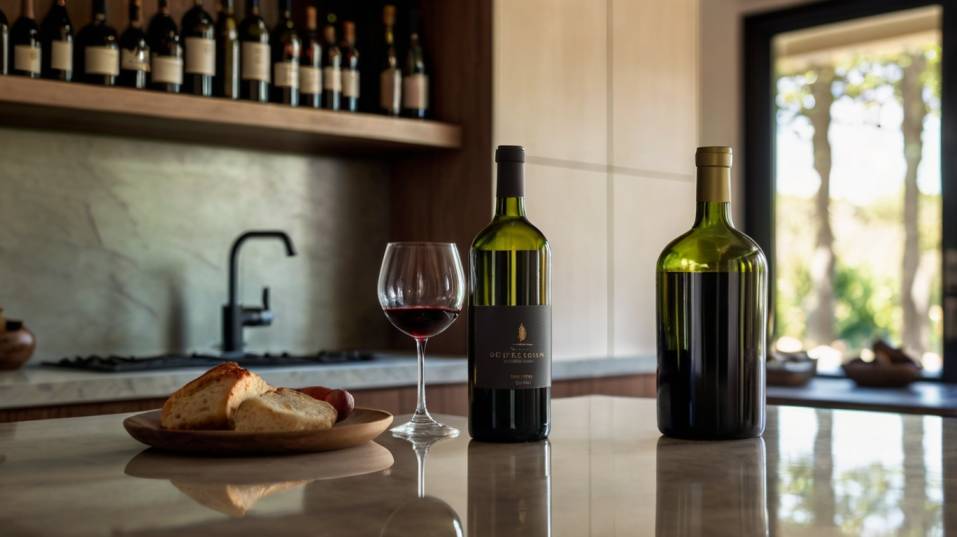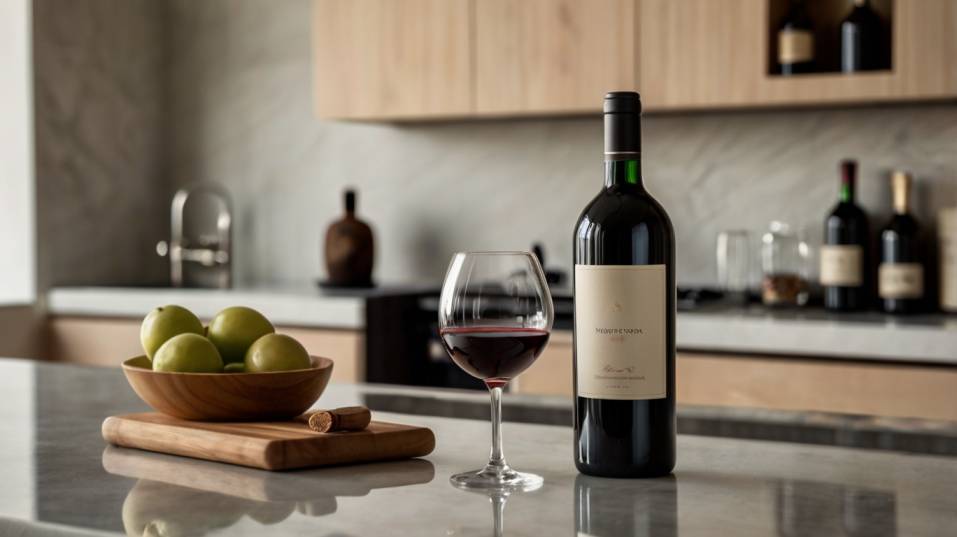What It Means When a Wine Is “Closed”
Wondering why a great wine tastes muted? Learn what a “closed” wine is—and how to taste, wait, and choose bottles with more confidence.

Ever opened a bottle expecting fireworks—and tasted barely a spark? You’re not alone. Sometimes a wine that should be bold and expressive shows up blank and quiet. It’s not flawed. It’s just not ready to talk.
This is what wine professionals call a “closed” wine—and understanding it is a turning point. If you’ve felt confused or underwhelmed by a bottle that seemed promising, this concept can shift how you taste, collect, and trust your palate.
What It Really Means for a Wine to Be “Closed”
When a wine is described as closed, it means it’s not showing its full aromatic and flavor potential—despite having the structure and quality to do so.
The wine is still alive and intact, but its personality is hidden or “shut down,” often because of where it is in its life cycle.
This happens most often with wines that are age-worthy, meaning they’re built with the structure—tannin, acidity, and concentration—to evolve over time.
Think of a closed wine like a person who has everything to say but chooses silence. The potential is there, but it’s not accessible at the moment.
You might sense texture or structure in the mouth, but you’ll struggle to find lifted aromatics or detailed, expressive flavors. The wine may seem tight, angular, or one-dimensional.
Importantly, being closed is not a flaw. It’s a natural, often temporary phase in a wine’s development.
Why Wines Go Through “Closed” Phases
Wines are not static. They change over time in bottle, moving through stages where they might be fresh and fruit-driven, then tight and unyielding, then layered and mature.
A closed phase can happen at different points depending on the wine’s style, grape variety, vintage, and how it’s been made and stored.
One common period when wines go quiet is a few years after bottling—especially for structured reds and certain whites that are built to age.

After the initial freshness of youth fades, and before the complexity of age kicks in, wines often pass through a muted middle stage.
This is especially true for classic aging wines like Bordeaux, Barolo, Brunello, or even white Burgundy and Riesling. During this phase, their aromas shut down, their tannins can feel harsher, and the wine’s character seems elusive.
This “dumb phase” isn’t predictable to the day, but it’s common enough that serious collectors and sommeliers plan around it. Knowing when wines tend to close down can help you avoid opening a bottle that’s in hiding.
How to Recognize When a Wine Is Closed
Recognizing when a wine is closed takes more than just one disappointing sip—it requires paying attention to subtle signals.
A wine doesn’t announce that it’s closed; it simply resists showing you what it’s capable of. Here are the key signs to look for when something feels off in the glass.
Aromas Are Faint
You swirl the glass and struggle to get more than a whiff of anything meaningful.
The Palate Is Tight
The wine may seem sharp, with firm acidity or tannin dominating any sense of flavor.
The Finish Drops Off Quickly
Nothing lingers. There’s no sense of echo or evolution in the mouth.
It can be confusing because the wine may look beautiful in the glass, and you may know it’s a good bottle—maybe even expensive or highly rated.
But it just doesn’t deliver in the moment. That’s your clue. If everything says this wine should be impressive but it tastes muted, it’s likely closed rather than flawed.
By contrast, a flawed wine will show more obvious problems: cork taint (smells like wet cardboard), oxidation (tired or vinegary), or brett (barnyard funk).
A closed wine is clean, balanced, but emotionally absent. It’s not faulty—it’s withholding.
What You Can Do When a Wine Is Closed
You don’t have to give up on a closed wine.
With the right approach, you can often coax it into revealing more of its character—or at least better understand what it needs. The following strategies can help you respond with more precision and patience.
Let It Breathe
The first and most common approach is to give the wine oxygen. Pour it into a decanter, swirl, and wait.
Some wines open up with just 30 minutes of air; others may need hours. Tasting it in intervals—every 15 to 30 minutes—can help you notice how the wine evolves over time.
Use the Glass Wisely
Even without a decanter, swirling the wine in a large glass and giving it time between sips can help. Wine is sensitive to oxygen, and that’s a good thing when a wine is closed. Some wines may seem completely different after just a short wait.
Warm It Gently
Temperature plays a key role in wine expression. If you’ve pulled a red wine straight from a cool cellar or fridge, it may be too cold to release its aromas.
Allow it to come to the low 60s (°F) and taste again. Never rush a wine served too cold—cold temperatures mute aromas and exaggerate tannin.
Walk Away
In some cases, the wine needs more than just a few hours. It needs time—months or years in bottle. That’s when cellaring becomes useful.
If you suspect a wine is closed and decanting doesn’t help, it’s often better to re-cork it, mark your notes, and try it again in a year or two.
Don’t Confuse Closed with Characterless
Over time, you’ll start to tell the difference between a wine that’s just young and hiding versus one that simply lacks depth. A closed wine still has energy and tension—it just hasn’t released its full story yet.
Wines Most Likely to Be Closed
Not every wine goes through a closed phase. Light, fresh wines made for early drinking—like Beaujolais Nouveau, Pinot Grigio, or most rosés—are meant to be enjoyed young and open.
But wines with aging potential are more likely to shut down temporarily.
These include:
- Bold red wines like Cabernet Sauvignon, Nebbiolo, Syrah, and Bordeaux blends
- Classic white wines built for age, such as Chardonnay from Burgundy or premium Riesling
- Wines from cooler climates with high acidity and structure
Understanding a wine’s natural arc helps you avoid disappointment and drink bottles at the right time.
Why It Matters for You as a Taster
Learning to recognize when a wine is closed gives you more control and more confidence. You stop blaming your palate.
You stop assuming the wine is bad. Instead, you learn to listen—to the signals in the glass, the structure of the wine, and the conditions it needs to reveal itself.
It’s also a key moment in your wine journey: when you stop just drinking wine and start engaging with it. You’ll trust your senses more.
You’ll be more thoughtful about when to open certain bottles. And you’ll gain patience—an underrated but essential skill in the world of great wine.
Final Thoughts
A closed wine is a moment of quiet potential. It’s not there to impress right away. It’s there to reward attention, time, and trust.
If you find yourself disappointed by a bottle that seems too tight or mute, pause. Swirl. Decant. Give it some space. Or simply take a note and revisit it later.
Every wine has its own timeline—and learning to meet it where it is can change the way you experience what’s in your glass.
Tonight, try this: Open a structured red you’ve been saving. Taste it right away. Then decant it and revisit it every 30 minutes.
Notice how it shifts, reveals, softens, deepens. This small act can unlock not only the wine—but a more grounded, confident way of tasting. Let the wine lead—and let yourself catch up.




